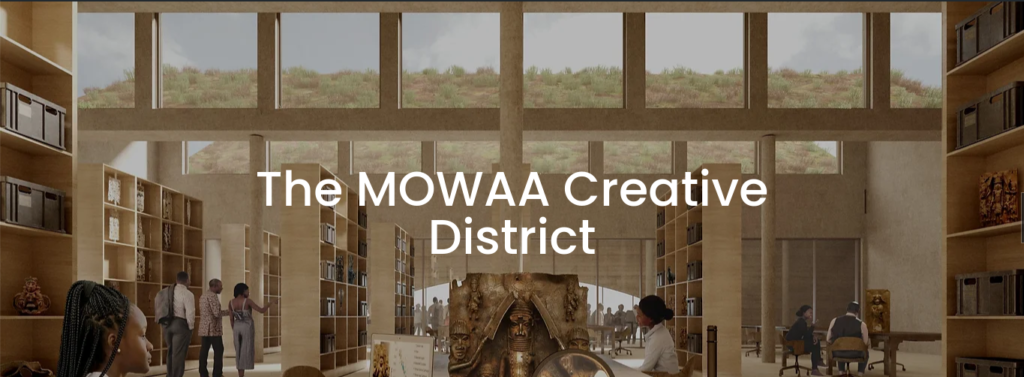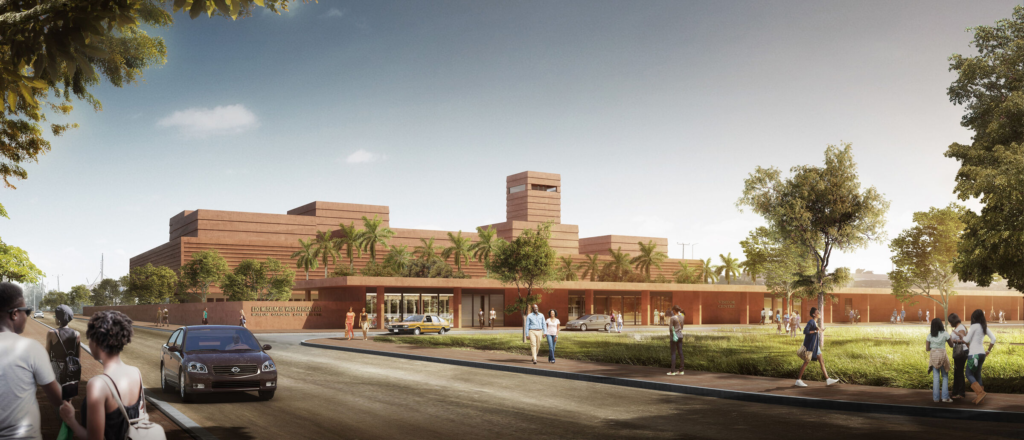The ongoing development of the Museum of West African Art (MOWAA) in Edo State will revolutionize the region. David Adjaye, the architect, asserts that upon initial observation, the design concept may appear to be a traditional museum. However, in reality, it aims to dismantle the objectification prevalent in the West through complete reconstruction. The ongoing construction repositions Edo as a cultural and tourism hub in Africa. Governor Godwin Obaseki emphasizes the project’s potential to attract visitors, generate tourism revenue, and promote a cultural renaissance. In this article, I will provide the construction progress of the museum, while local and international partners provide their support

Progress and Transformation:
In a recent visit, Governor Obaseki, accompanied by bronze casters, woodcarvers, and tourism industry experts, expressed satisfaction with the project’s advancements. He envisions the museum as a transformative force, bringing economic growth and employment opportunities to the state. Inspired by historical architectural typologies, the new EMOWAA creates a public garden courtyard, featuring indigenous flora and a shade-providing canopy. Elevated galleries hover above the gardens, defined by raised volumes.
Within each volume, pavilions replicate reconstructed historic compounds, enabling objects to be displayed in their pre-colonial context. This arrangement enhances visitors’ understanding of the artifacts’ significance within Benin City’s culture, traditions, and political economy. EMOWAA offers a dedicated space to house Benin’s rich, regal, and sacred objects. It goes beyond mere observation, allowing visitors to gaze into the visual landscape, envisioning the restored ancient kingdom’s historic borders. The foundation has been laid, and the construction is rapidly progressing towards the roofing stage. Moreover, the exhibition mounted by MOWAA showcases the rich history and culture of Edo State. It unveils the region’s greatness through various art forms and archaeological findings.
Overcoming Challenges and Resilience:
Acknowledging the challenges encountered along the way, Governor Obaseki commends the project’s partners for their resilience and unwavering support. The collaboration has proven instrumental in ensuring the realization of the museum. Beyond the physical structure, the project has fostered education and preservation initiatives. We have taught school children about conservation methods and the evolution of Edo’s cultural heritage across generations. Governor Obaseki describes the project as the most transformational endeavor undertaken during his tenure.
Tourism Potential and Economic Impact
The Museum of West African Art holds immense potential for Edo’s tourism industry. The governor envisions the emergence of hotels, restaurants, and various hospitality businesses, cementing the state’s status as a tourism hotspot. By aiming to diversify the economy and decrease dependence on external revenue, the project establishes a resilient economic foundation. Governor Obaseki highlights the significance of creating a sustainable economic model that showcases Edo’s cultural richness and attracts a multitude of visitors, thus boosting the state’s economy.

The ongoing development of the Museum of West African Art in Edo State is poised to transform the region into a vibrant cultural and tourism hub. Governor Obaseki’s commitment to the project and the support of local and international partners have paved the way for its realization. As construction progresses, the museum’s exhibition promises to showcase the rich history and cultural heritage of Edo State, inviting visitors to explore and appreciate its magnificence. With a vision for economic diversification and sustainable growth, the project heralds a new era of prosperity for Edo, firmly establishing it as a prominent destination on Africa’s cultural and tourism map.


